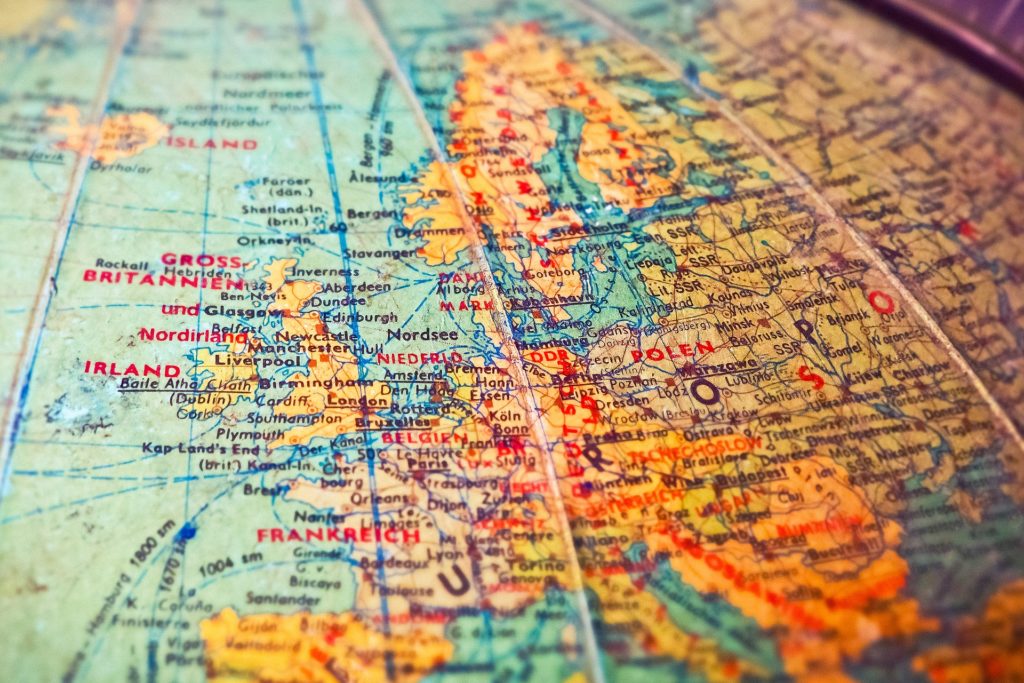An often overlooked need in global mission work is the need for missionaries in Europe. Much of the church’s mission focus has been on those populations of the world that are unengaged or unreached. For the last 30 years, significant effort and resources have been spent on work, for example, in the 10-40 window, the global south, and the Far East. Europe has, by contrast, received little in the way of missionary investment during that same time period. There are a number of reasons for that, but among those reasons are some common misconceptions, or myths, about the spiritual realities in Europe.
MYTH 1: Europe is a Christian Continent
This myth is based on a false assumption about the relationship of the Europe of today and the Europe we learned about in school. So much of European history is Christian history, with so much of the development of the Christian religion and traditions having taken place on the European continent. After all, why would anyone think it necessary to send missionaries to the historic home of Christianity, to the land of the Reformation, to the place where modern missions was launched? Christianity influenced all of European life, and can still be seen clearly through the church buildings, the religious art, and even the law and ethics of much of the continent and the world.
However, the Europe of today is not the Europe of yesteryear. Sure, all of those churches are still there, and countless place names carry the names of Christian saints, but those things are now only symbols of the past, and do not carry the spiritual significance that they might have had at their inception. Since the Enlightenment the trend has gone steadily in a secular direction. Europe has drifted from God.
MYTH 2: Europe is Reached
Okay, in light of the first myth, perhaps we might not be able to say that Europe is a Christian continent, but certainly we can confidently consider Europe to be a continent that is reached, right? The terms “reached” and “unreached” have historically been difficult to define and have not always been helpful ways to describe the spiritual realities amongst particular people groups. For more on that check out this article in the International Journal of Frontier Missiology. The Joshua Project defines “unreached” as a people group that is less than or equal to 2% Evangelical– AND–less than or equal to 5% Christian Adherent. By this definition, especially considering the Christian history of the continent, it would be hard to consider Europe as “unreached.”
The reality is that Europe is, at best, minimally reached. Current estimates on the state of Gospel witness in Europe overall indicate that it is 70% Christian. But that statistic does not paint the whole picture. When looking at the percentage of Evangelicals, these numbers more or less match figures of those “unreached” populations in other parts of the world. Consider, for example, France (1.2%), Austria (0.6), Czech Republic (0.7), and Poland (0.3). Or, look at the numbers in Spain, where two of the largest and wealthiest indigenous populations in the country, the Catalans and the Basques, are at 0.54% and 0.67% Evangelical respectively. Those are comparable to figures of many peoples inside the 10-40 window. Organizations have had a lot of difficulty trying to categorize this, as evidenced by the many different description given to these people groups. The Joshua Project itself has categorized them over the years as formerly reached, falsely reached, and (their current label) superficially reached.
MYTH 3: People in Developed Countries do not Have Needs
This myth has a problem with its premise: while physical needs can be identified by socio-economic status, spiritual needs cannot. It is true that Europe does not have significant need of outside resources for things like healthcare, infrastructure, literacy, and general education, that does not in any way communicate anything about the spiritual status of the continent. Wealthy people still need the gospel and the workers on the field have the challenging task of finding entry points that meet emotional and relational needs that lead to meeting spiritual needs.
MYTH 4: The Spiritual Climate in Europe is Like the Spiritual Climate in the United States
Because the day-to-day life of many Europeans looks more or less like every day life for Americans, the assumption is that the spiritual climate must also be the same. Sadly, some trends are, indeed, comparable. Every year both Europe and the US are becoming more and more secular. So while secularization is widespread, most Americans still identify as Christian, or at the least, religious.
The author from Pew Research who offered a summary of this survey writes, “But while secularization is evident on both sides of the Atlantic, unaffiliated Americans are much more likely than their counterparts in Europe to pray and to believe in God, just as U.S. Christians are considerably more religious than Christians across Western Europe.” She goes on to note that “In fact, by some of these standard measures of religious commitment, American “nones” are as religious as – or even more religious than – Christians in several European countries, including France, Germany and the UK.”
Conclusion: The Need is Clear
Despite the many misconceptions of the state of the church in Europe, there is a great need for workers and resources. The point is that missions is about the Gospel, and as long as there is still a significant amount of lostness, there is still a need for strategic mission.

